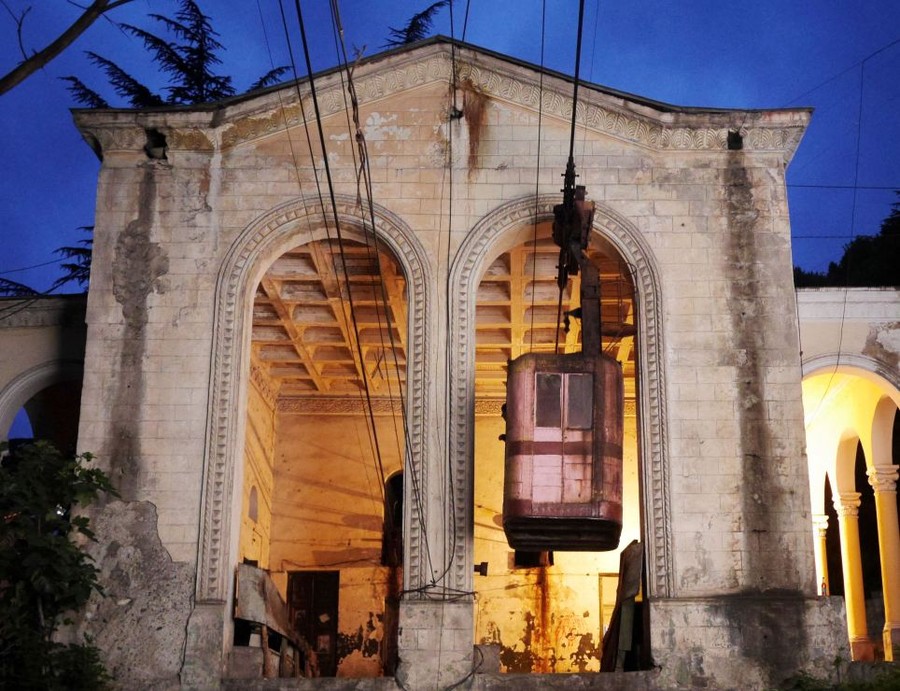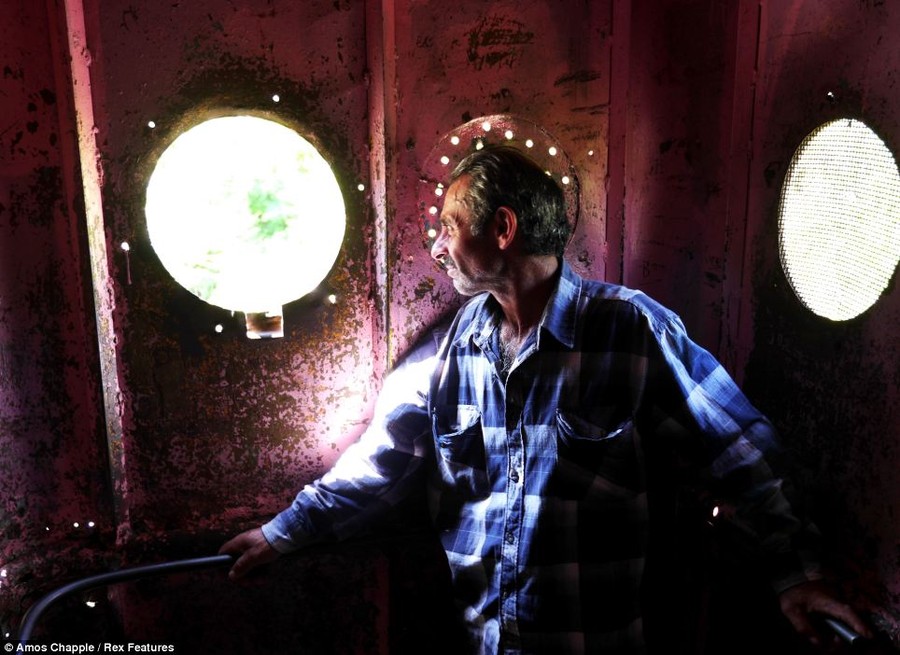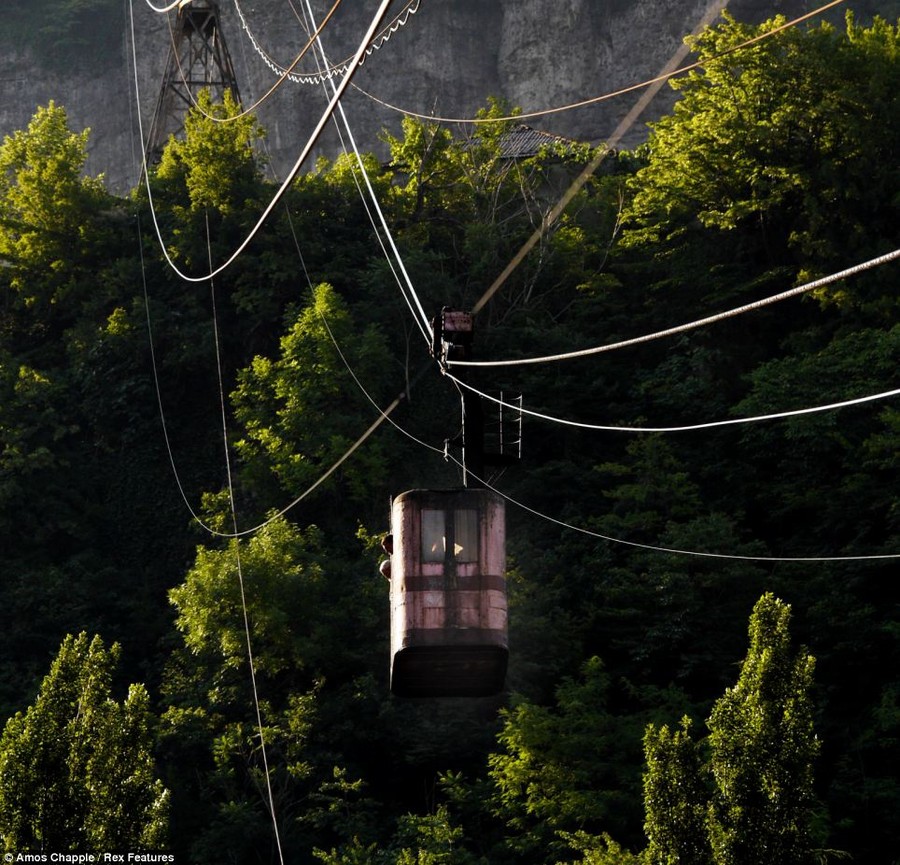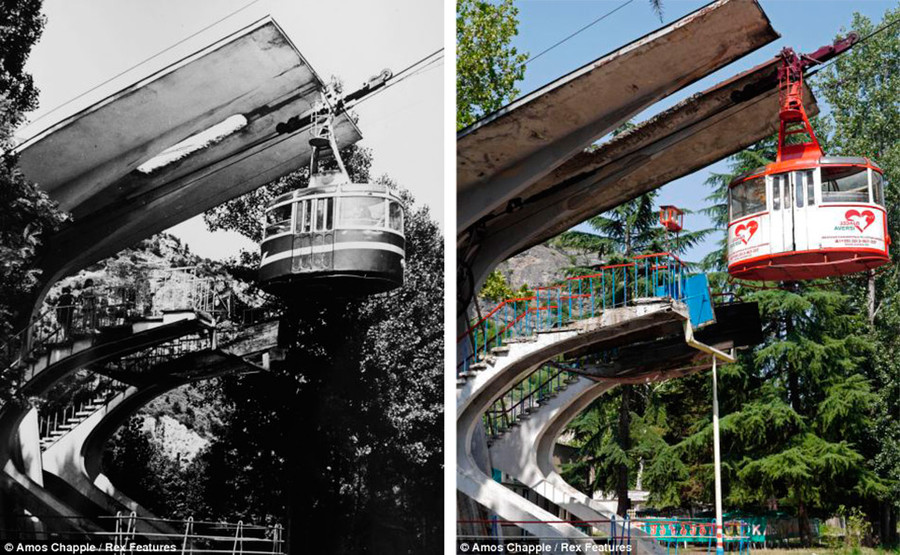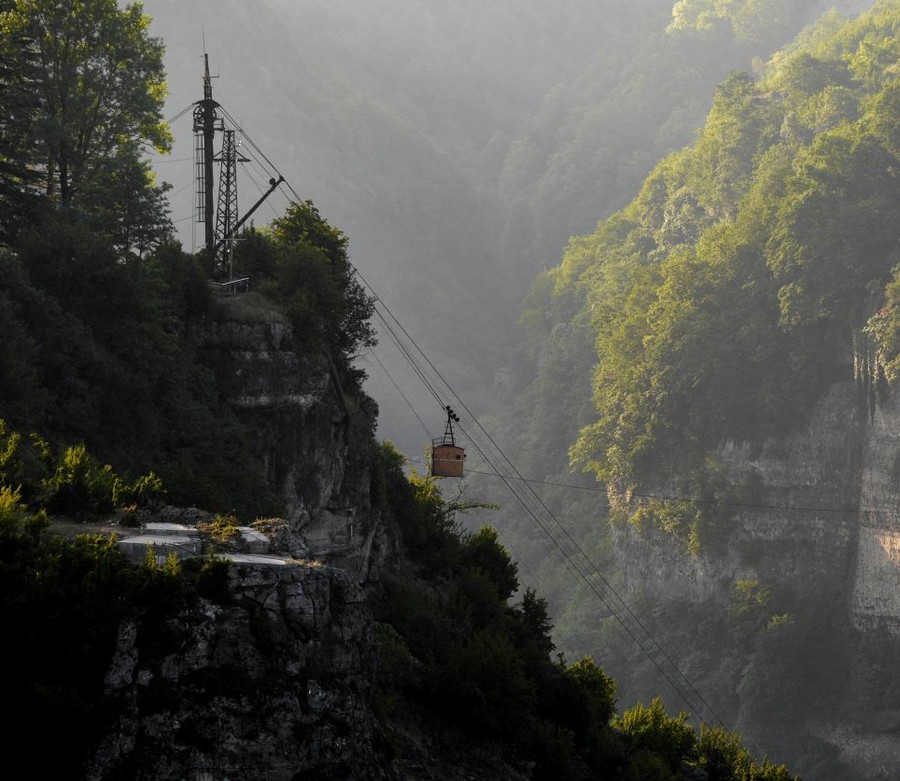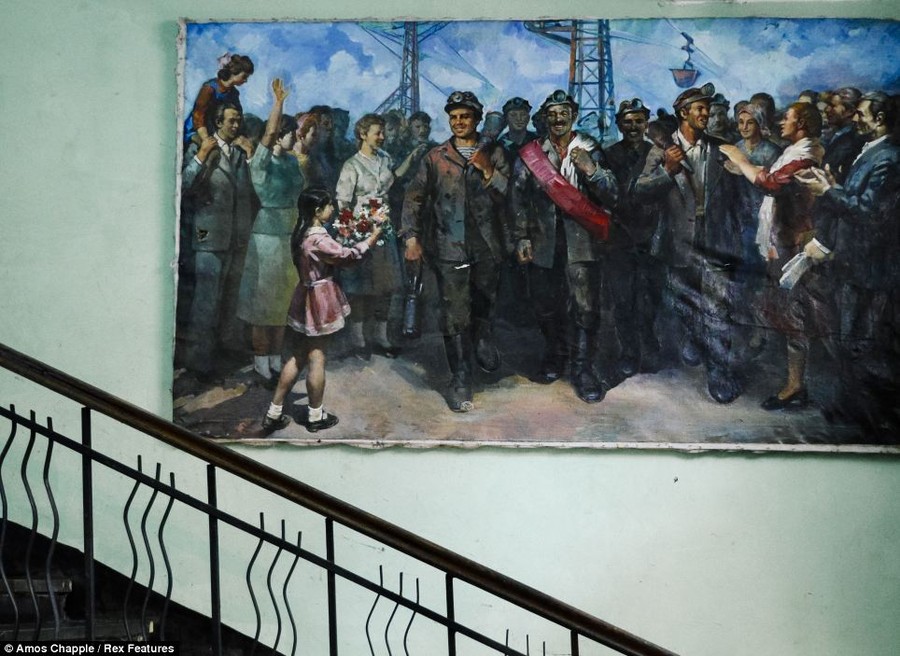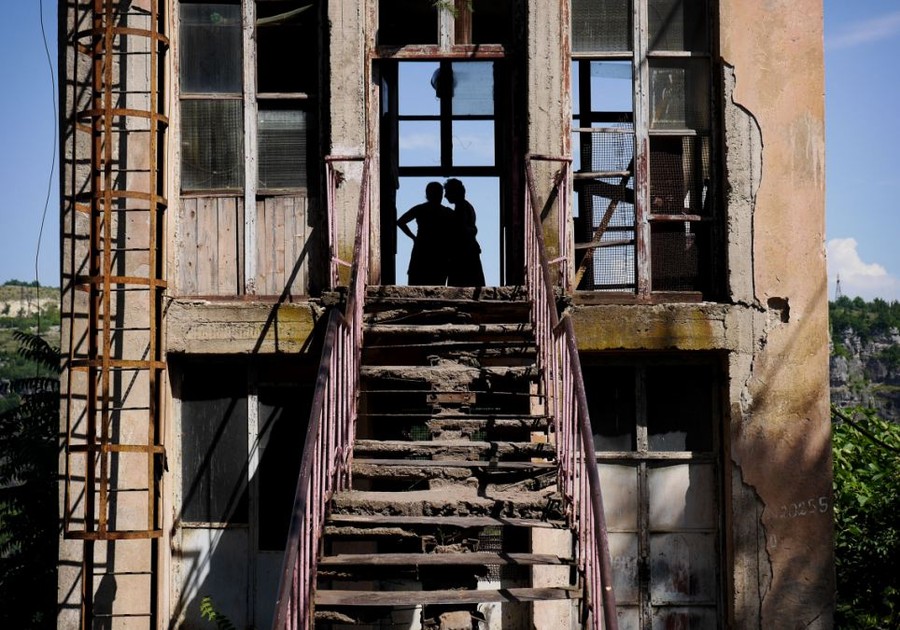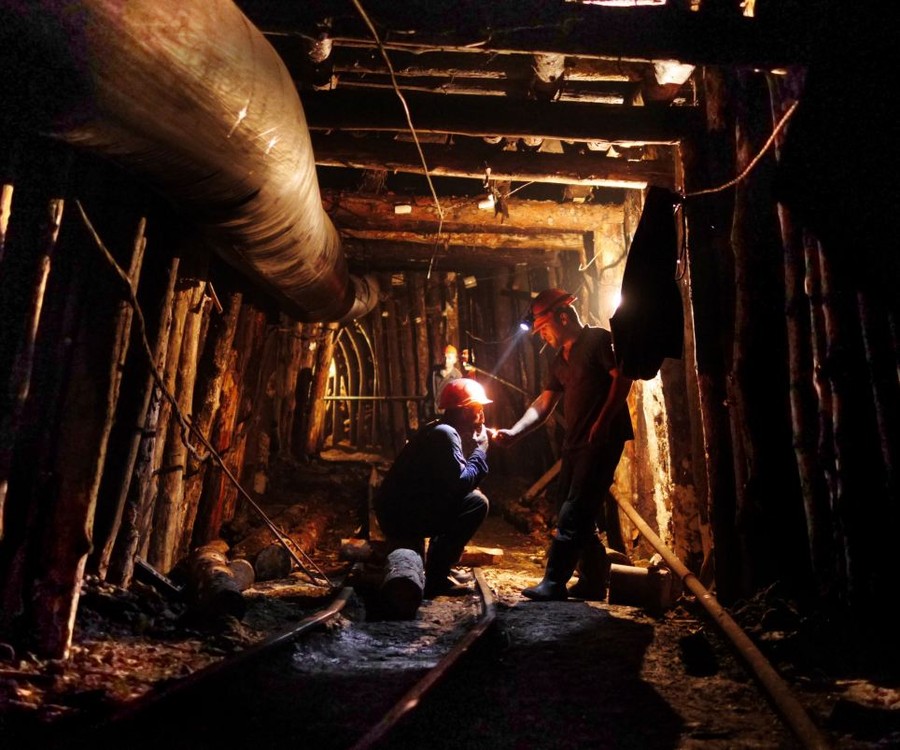Чиатура - город, пересеченный сетью устаревших канатных дорог советской эпохи. Некоторыми из них люди пользуются до сих пор. В 50-х годах для местных жителей канатная дорога была, все равно, что "кэб" для сегодняшних жителей Нью-Йорка. Побывавший в Чиатуре фотограф Амос Чэппл запечатлел воздушную транспортную систему, связавшую самые отдаленные уголки маленького городка, пишет Daily Mail.
В начале XX века, после того как Грузия вошла в состав СССР, советские власти планировали освоить обширные залежи марганца под Чиатурой, построенной в 1905 году. 50 лет советские планировщики пытались найти способ и соединить окраины города, в конце концов решив, что транспортная система будет воздушной. После Второй мировой началась работа по строительству канатных дорог, которые сегодня соединяют практически каждый уголок города. Дополнительно в Чиатуре, на которую когда-то приходилось до 60 процентов добычи марганца в мире, построили развитую сеть трамваев.
Благодаря новой транспортной системе рабочие могли прямиком из жилых районов попасть к шахтам. Канатка и трамваи позволили быстро транспортировать и марганец. Тогда в шахтах трудились почти 4 тысячи рабочих, многие работали по 18 часов, без отдыха и сна, чтобы выполнить план по производству.
К началу XXI века местные канатки морально устарели, вагоны заржавели, а из многочисленных дорог канатной сети Чиатуры сейчас работают только 17.



